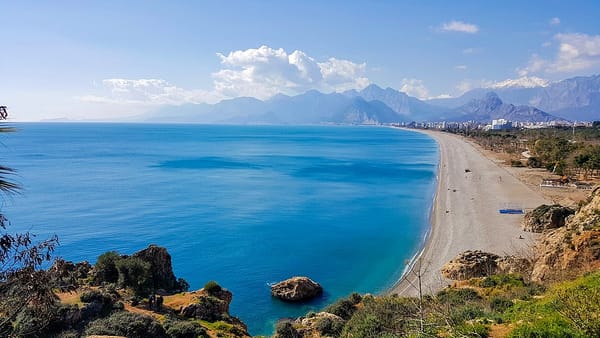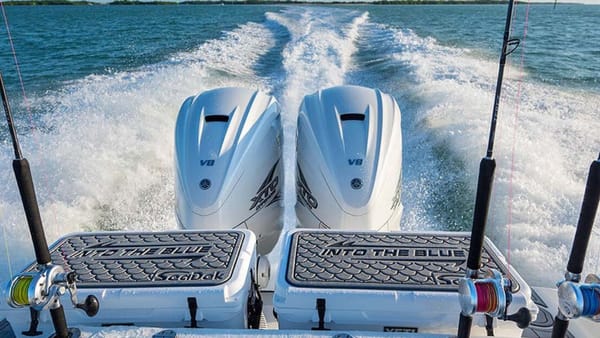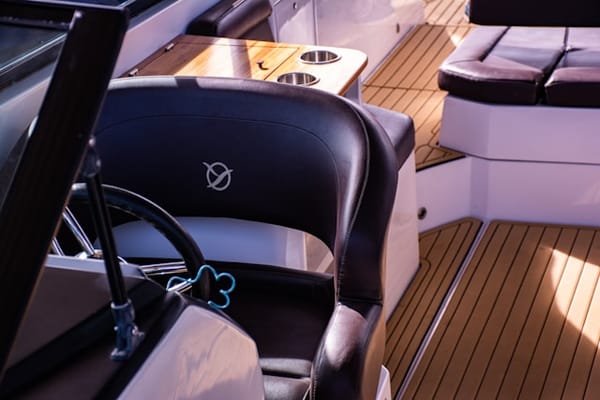Down or Out: Which Rigging is Right for Your Boat
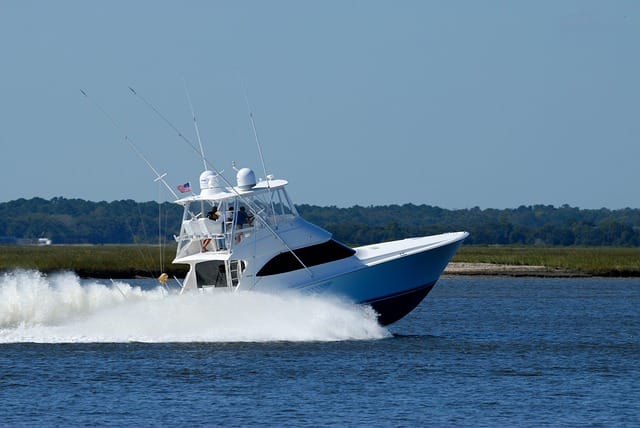
Whether you’re a serious angler or only out on the lake on weekends, your main goal is probably to catch more fish. One of the best ways to accomplish this is by adding downriggers or outriggers to your center console, bass boat, sportfishing boat or even pontoon boat.
Along with trolling motors, downriggers and outriggers can really help step up a fishing game. You’ve probably seen both types at marinas, private boat docks for rent and out on the waterways. They are similar in appearance, resembling dockside mooring whips you might see at a private boat dock rental, but they do have some differences. Today, we’ll talk a bit about the uses for, and differences between, the two as well as how they can both improve your fish-catching skills.
Downriggers
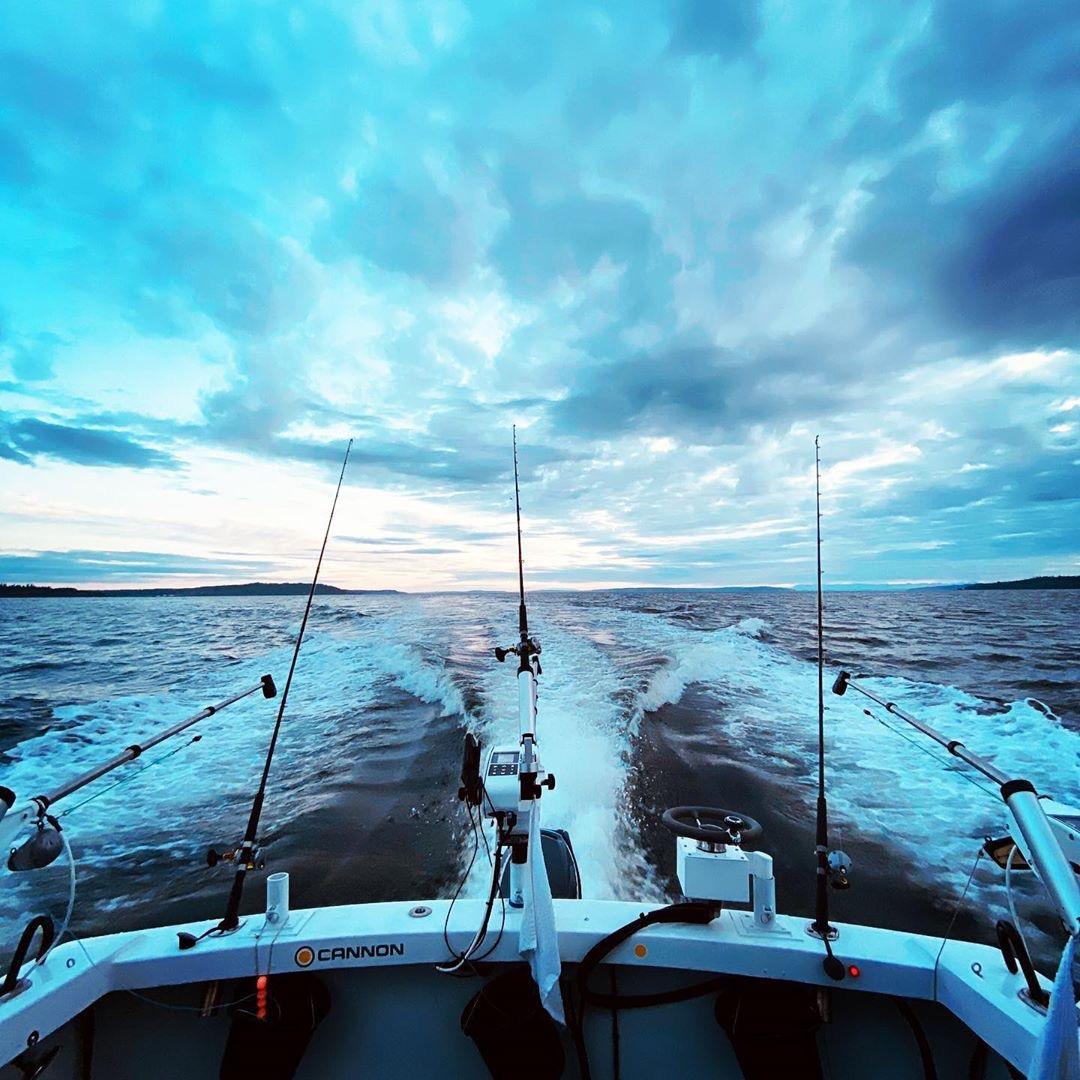
Photo: Cannon (Facebook)
Not just for trolling, downriggers allow you to control the depth of the line and the bait. You can position the bait at a specific depth in the water and keep it there. This process matches the natural feeding patterns and movements of the fish, allowing them to feed as they naturally would. Some fish only feed at a specific depth, so you can target certain types. Downriggers allow the line to go under the boat where fish may be more likely to hang out.
Downriggers can catch a variety of saltwater and freshwater fish such as walleye, striped bass, lake trout, brown trout, steelhead trout and chinook salmon. They are also fairly easy to remove from the boat.
There are two types of downriggers: electric and manual.
Electric downriggers have an electric motor that lets out and retrieves the weight. This allows you to use your hands for fishing. There are lots of advanced features and they can lift up to 20 lbs. quickly and easily.
Electric Downrigger Pros
- Easy to use for solo fishing
- Some have programmable depth presets
- Fast
- Allow the line to go deeper than manual styles
Electric Downrigger Cons
- More maintenance
- Uses more battery power
- More expensive
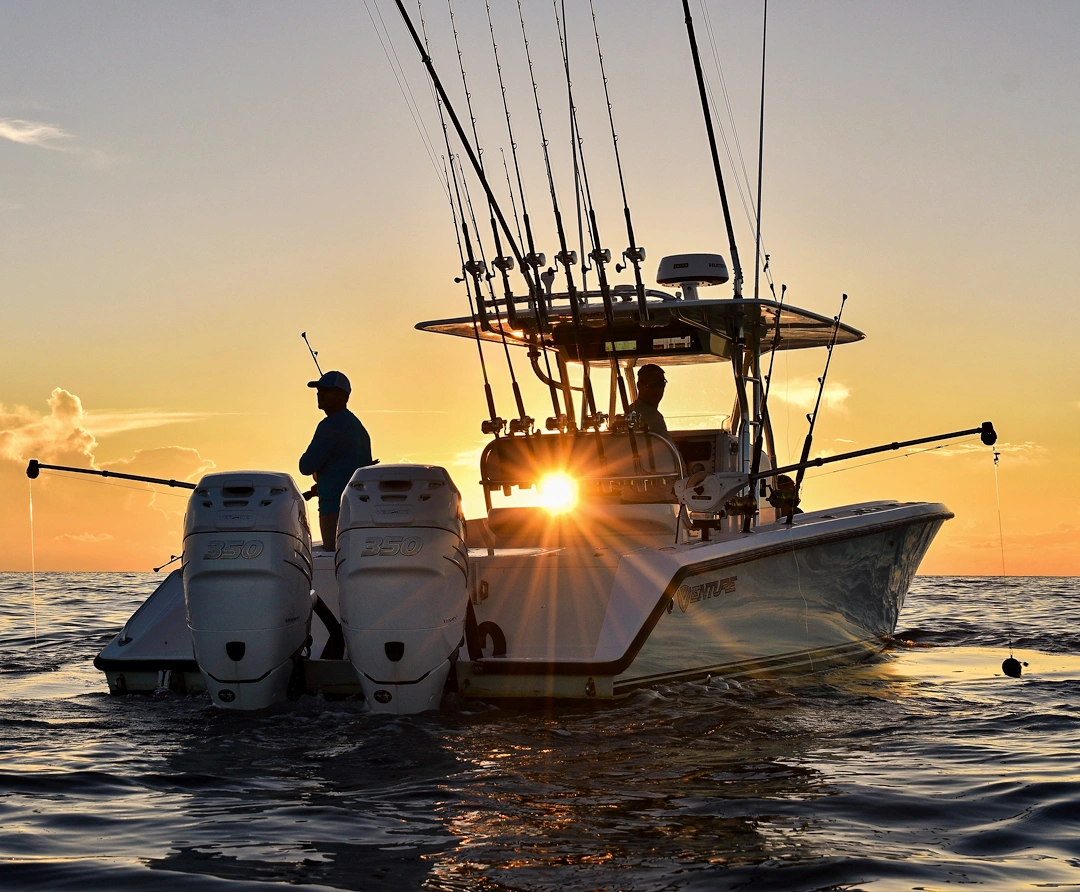
Photo: Cannon (Facebook)
Manual downriggers have a manual crank that you have to turn to let out and retrieve the weight. Since they don’t need a battery, they make a good spare or for use on a small boat. This is a good type to start out with when you’re just getting into fishing with rigging. They can be bolted to the boat or clamped on at a private boat lift rental.
Manual Downrigger Pros
- Easy maintenance
- Inexpensive
- Good for small boats
Manual Downrigger Cons
- Can be harder to use for deep-water fishing
- Slower
Parts of a Downrigger System
- Spools and lines
- Cranks or motors
- Trolling weight (known as a cannonball or flash weight)
- Wire Cable (attaches to the weight)
- Booms (an extended arm)
Line Release Clip
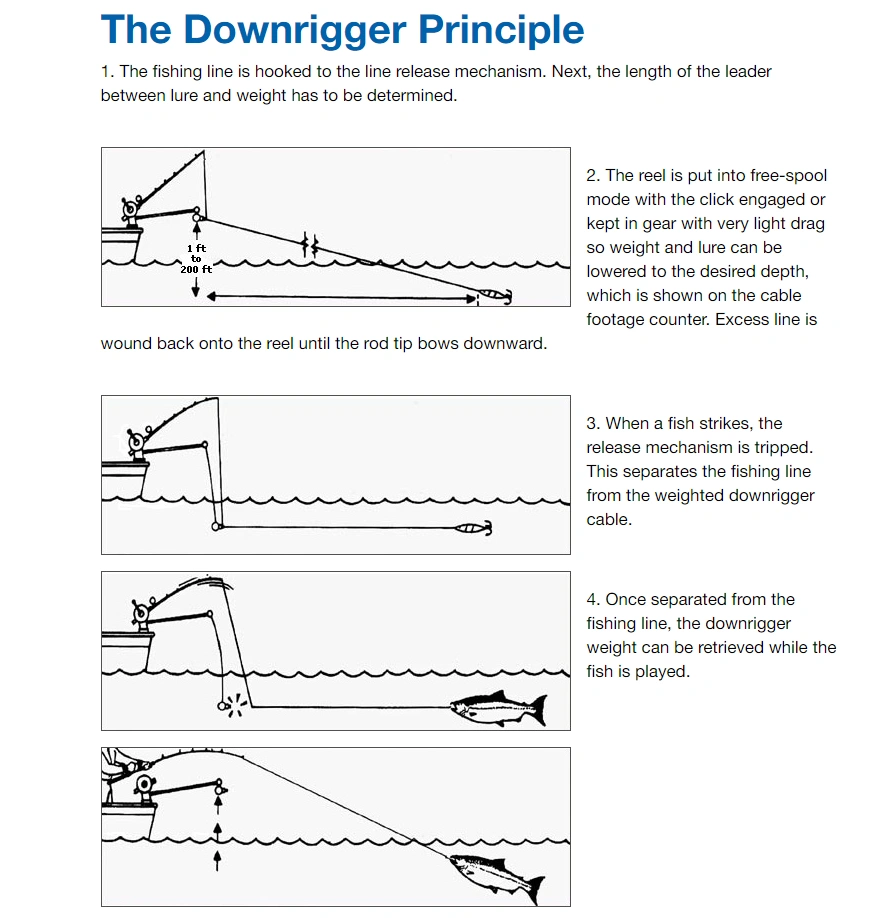
Photo: West Marine (screenshot)
How Downriggers Work
- The base of the downrigger attaches to the gunwales of the boat (either in a rod holder mount or a bolted-on mount).
- The trolling weight (also called a flash weight) gets attached to the line.
- Put the rod in the holder.
- Lower the weight to the preferred depth.
- While it’s trolling, the flash weight keeps the lure at your specified depth. This allows the lure to “swim” behind the weight (resembling live bait for the fish).
- When a fish takes the bait, by pulling on it, the line release will let go and hook the fish.
- Once a fish is on, pick up the rod and start reeling it in.
Outriggers
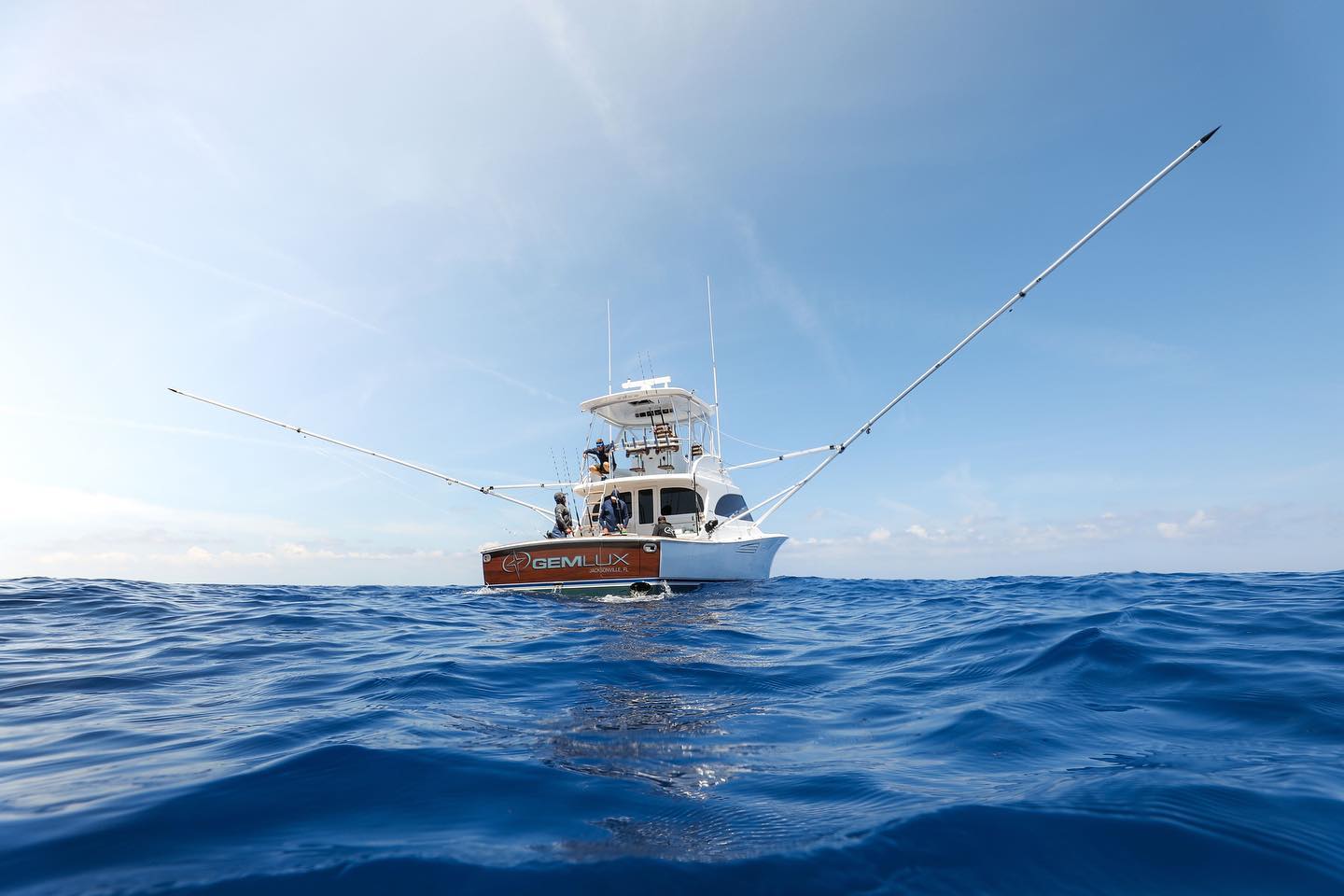
Photo: GemLux Fishing (Facebook)
Outriggers extend outward off the rear of the boat (where they lean to the left and right / port and starboard). They work by pulling the lines and are designed to spread the lines out (keeping them from getting tangled), rather than control the depth of the line by sending the lines down (like a downrigger). You can put multiple fishing lines on them without the worry of tangling.
Outriggers are aluminum poles and are used more for offshore fishing (trolling) for varieties such as swordfish, tuna and other gamefish.
Outrigger Pros
- Prevents tangled lines
- Allows for a better view of fish (since they’re positioned further away, you’ll get a clear view)
- Covers more water area than a fishing rod alone
- Keeps bait out of the wake (since they extend from the side)
Outrigger Cons
- More expensive than downriggers
Often used in tournament fishing, outriggers range from 12-foot to 50-foot and up poles. With larger ones, you’ll need to add in support from support cables and spreader arms. Outrigger bases can be mounted in a variety of places: the hardtop, folding out from the sides of the cabin, mounted directly onto the boat’s gunwales or placed in a rod holder. It’s difficult (but not impossible) to remove outriggers from the boat. Some smaller ones are telescopic, so they’re relatively easy to collapse if you need to trailer the boat to a private boat slip rental.
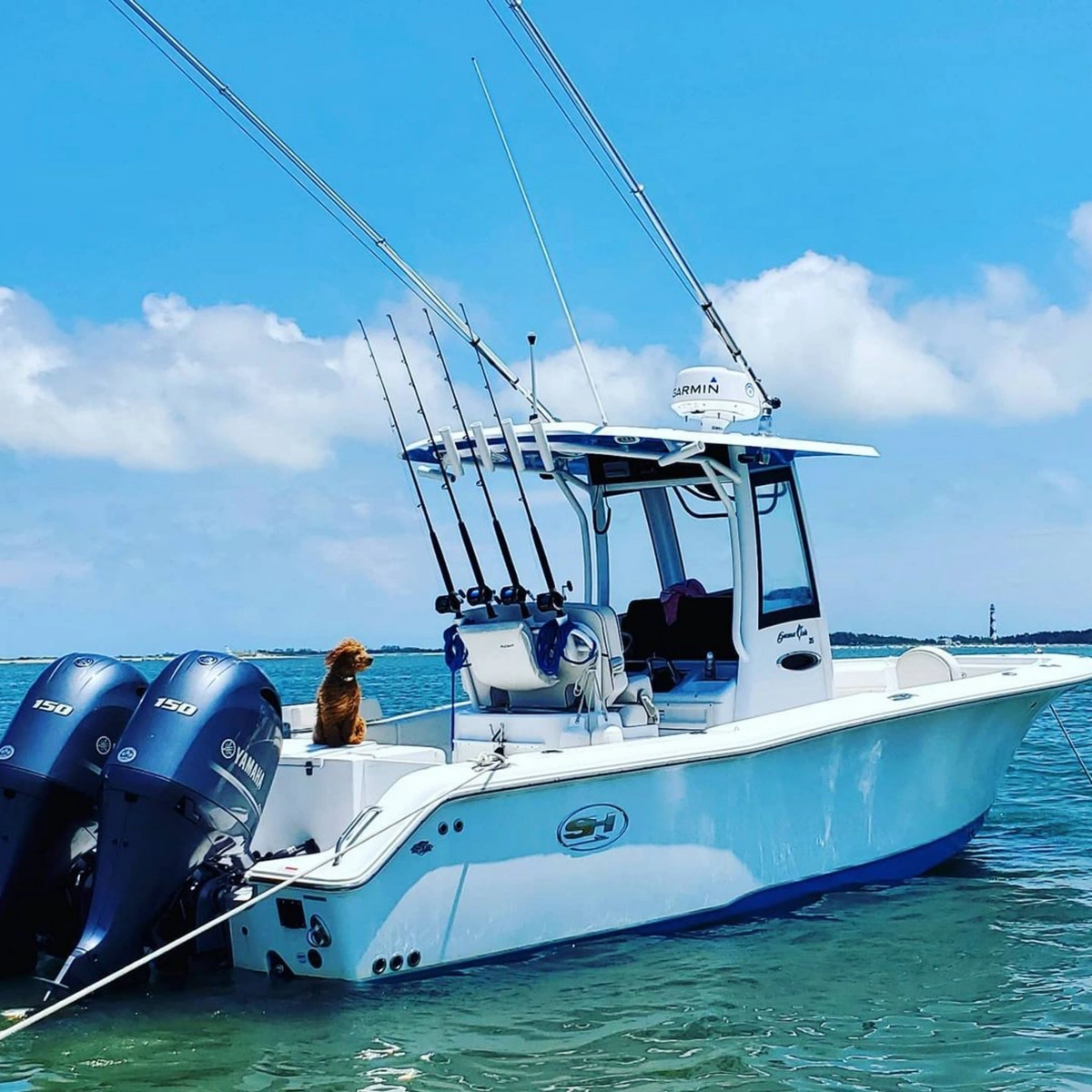
Photo: Tuco Marine (Facebook)
Parts of an Outrigger System
- Aluminum poles (also called antennas)
- Bases
- Halyards
- Release Clips (holds the line until a fish bites)
Differences in Downriggers and Outriggers
Downriggers hold the line far down beneath the water (attracting deep-dwelling fish).
Outriggers are long poles that hold the line out from the boat (covering a wider surface area).
Outriggers are used to troll bait/lures along the surface (replicating natural actions of bait for fish).
Which type is better for your boat? Well, that's completely up to your personal preferences and fishing style. Some anglers like the outrigger because it causes a small slack in the line when the clip opens. This allows the fish to take the bait before the line becomes tense. Others like the downrigger because of the line control and depth at which you can keep a line. Think of it like this: If you want to troll for gamefish, use outriggers. If you want extreme control and greater depths, use downriggers.
Hopefully, this has helped with any questions, concerns or curiosity you may have over downriggers and outriggers. The next time you see a boat decked out in rigging at the private boat dock rental or marina, you’ll know which is which. Happy fishing!
